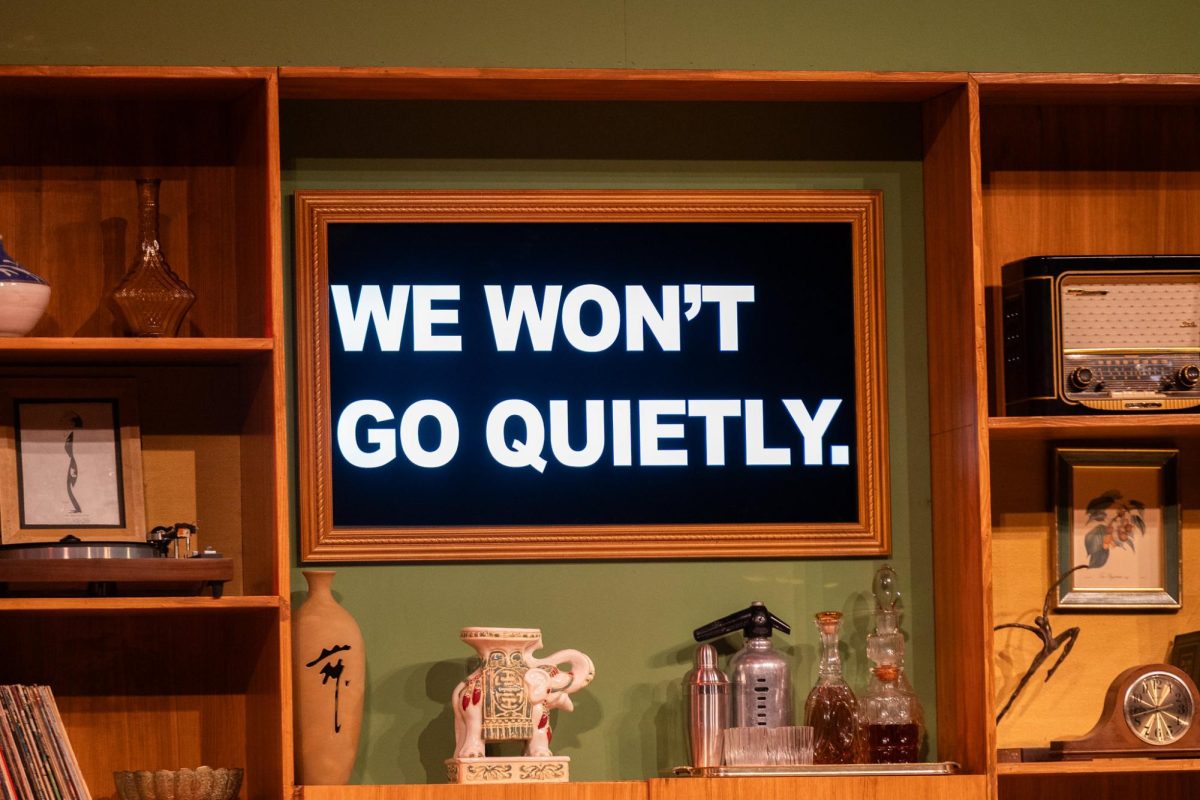Two weeks after it first debuted, the Sonoma State University Department of Theatre Arts and Dance’s fall dance concert, “Soundscape Project,” had a special encore performance last Friday at noon in Weill Hall. The “Soundscape Project” features the extraordinary combination of both sounds recorded in nature and choreography created from the soundscapes.
The idea for the project first blossomed two years ago when Claudia Luke, the director of the Sonoma State University Preserves, toured Weill Hall and heard its brilliant acoustics.
From there, Luke started brainstorming: “What would happen if we granted the sounds of nature at the SSU Preserves the same reverence and attention as an orchestra? What happens when we focus our attention on the rustlings of the weather, the songs of crickets and birds, and sounds of humanity? What could we learn about ourselves and our changing environment?”
The “Soundscape Project” took off after discussions with the SSU Deptartment of Theatre Arts and Dance, Department of Engineering Science, composer Jesse Olsen Bay, world renowned bio-acoustician Dr. Bernie Krause and of course, the students.
“I think personally for me a challenging part, though also exciting, was seeing the dance transform from the theatrical setting of Person Theatre, where we used theatrical lighting and video projections of the Fairfield Osborn Preserve, to the majestic stage of Weill Hall at the GMC,” said director and choreographer Kristen Daley in an e-mail interview. “For me, it was an incredible lesson in letting go of what was, and embracing a new possibility of how the dance would exist. It was really a gift to be able to see the dance in two different venues on campus.”
Hundreds of students and residents of Sonoma County packed Weill Hall to watch the special encore performance in the new venue and experience the melding of science and art in rare but beautiful way. Before the performance, a panel consisting of Luke, Krause, Olsen Bay, Daley and co-choreographer Christine Cali took the stage to share with the audience their journey and the making of the “Soundscape Project.”
As the lights dimmed and the dancers took their places, the sounds of the SSU Preserves slowly started to fill the hall. The dancers progressively filled the stage, rhythmically striking and clapping all over their bodies. The repetition of movement and sounds simulated raindrops, with the audience becoming soaked in intrigue.
“There is a soundscape that I recorded at Kelly Pond at the Osborn Preserve one day this summer at dusk,” said Olsen Bay in an e-mail interview. “The sound is incredible-there are three birds, I think redwing blackbirds, singing back and forth with each other from different sides of the pond. And you can hear the sounds of fish or turtles bobbing in and out of the water, and flies buzzing around, and a few other animals. It’s like an orchestra of little tiny sounds, with the redwing blackbirds as the star soloists. The sound is absolutely magical. I think it’s one of my favorite soundscape I’ve ever recorded.”
“In the dance, we hear this soundscape with a duet by Jenna Valez and Emma Higgins. The duet has a lot of space and slow movement, interspersed with quick flurries and gestures. The dancing is sublime, and creates a strange, vivid world with the soundscape,” said Olsen Bay.
The performance encapsulates a typical day in the life at the SSU Preserves, with the soundscapes and lighting transforming steadily over the span of 30 minutes. Movements of creatures great and small are mimicked by the dancers as they take turns with solo pieces, duets and large ensemble pieces.
As the dancers were running all over the stage, they were reminiscent of a flock of birds flying in formation, with jumping and diving sporadically happening here and there. With such grace and finesse, the dancers managed to not only captivate the audience throughout, but at the same time gifted them with a different perspective of the world around them.
“There are wild places like the Preserve that exist right in our backyards-the Preserve is only a 15-minute drive from campus, and it’s like stepping into a different world,” said Olsen Bay. “Visiting and interacting with these places with respect and reverence can be a profoundly beautiful and moving experience.”


































